Top 5 Plants and Flowers to Grow in Full Sun
Happy March!! It’s time to start thinking about getting your spring garden together so in that vein, we’ve got a guest post this week from our good friend Krisha Chachra. You may recognize her name as she contributes to our mail magazine that we send out. She has a wealth of knowledge on plants and flowers that grow well in our region. Enjoy!
By Krisha Chachra
Your garden survived the winter frost, and the recently thawed spring soil is just waiting for you to dig in. The weather is still cool, and the ground is moist. Just perfect for planting the plants and flowers in your backyard.
Most gardening enthusiasts will know that the New River Valley and most of Southwest Virginia falls into USDA Plant Hardiness Zones 6a and 6b, where many perennial and annual flowers can thrive in full sun. Choose your plants and flowers wisely and then make sure to pack about 2 to 3 inches of mulch around them to lock in moisture and keep out the weeds.
Watering is key, according to gardenguides.com, full sun plants will need watering every seven to 10 days if there is no rainfall and can benefit from an all-purpose plant fertilizer. Here are the top 5 plants and flowers that have the best chance of thriving in your sun-soaked yard.
Yarrow
Yarrow or Achillea millefolium is an appealing flower to grow because it is a sun-loving perennial that can sustain dry spells in the weather. It can reach up to three feet tall and produces white, red or yellow blooms from spring into fall. It also has a leaf that looks almost fern-like and emits a distinct fragrance when crushed. 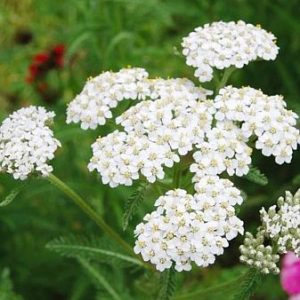
Historically known for its medicinal purposes, this plant contains a very large number of active chemicals that have been proven effective in treating everything from bleeding, fever, inflammation and toothache pain.
You may have heard it by other names such as the nosebleed plant (as it is known to stop nose bleeding), old man’s pepper (once used as snuff), devil’s nettle (used in potions and spells), soldier’s woundwort (used to clot blood), herbal militaris (useful in times of war), thousand-leaf (describes the many-segmented leaves), and thousand-seal. If you grow it, snatch a leaf and chew – and see what happens. Most likely your mouth will go numb.
Pinks
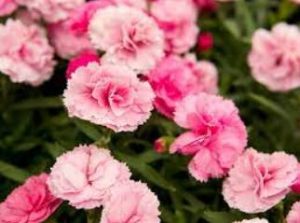 Classified as Dianthus plumarius, also known as Dianthus, there are over 300 species of them originally said to come from Europe and Asia. There is one species, Boreal Carnation, that hails from the Artic. Now naturalized across most of the U.S., the small flower blooms on tall, stiff stalks that are 8 to 20 inches high.
Classified as Dianthus plumarius, also known as Dianthus, there are over 300 species of them originally said to come from Europe and Asia. There is one species, Boreal Carnation, that hails from the Artic. Now naturalized across most of the U.S., the small flower blooms on tall, stiff stalks that are 8 to 20 inches high.
Usually, the flower has five rose-pink petals splashed with subtle white dots. The leaves are slender, slightly hairy, and green or gray. Bloom time is June and July in Virginia. Pinks produce fragrant blooms that may be purple, rose, white or multicolor. Make sure to plant them near and walking path or by your entryway so you and others can enjoy the fragrance.
Candytuft
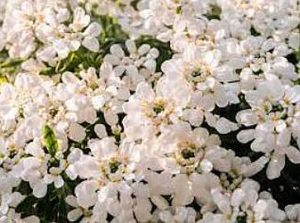
Candytuft, or Iberis umbellata, is great boarder plant and is a good companion plant for tulips or snapdragons, according to gardenguide.com. It is a compact plant which is covered in drifts of tiny white flowers that bloom at the same time as many of the spring bulbs. They tend to complement an array of garden flowers as their white flowers pop against green foliage.
If you take a minute to study the petals, you’ll discover they form a pretty pattern that is quite mesmerizing. The bees also seem to be drawn to this plant which is good for improving pollination of other perennials. Although not fragrant, Candytufts do stand out and can grow to a foot tall. It is recommended that the top foliage is cut back after blooming to keep them from getting too long.
Snapdragon
Snapdragon or Antirrhinum majus is a mainstay of classic flower gardens, with infinite uses. They can be planted in mixed gardens, flower 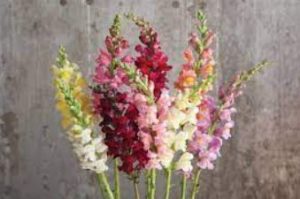 boxes to patio flower pots, and thrive in all of those environments. The name derives from the shape of the individual flower heads, which resemble the snout of a dragon. The head of the flower even opens and closes in a snapping motion, especially when bees and butterflies try to pry the jaws to reach the pollen.
boxes to patio flower pots, and thrive in all of those environments. The name derives from the shape of the individual flower heads, which resemble the snout of a dragon. The head of the flower even opens and closes in a snapping motion, especially when bees and butterflies try to pry the jaws to reach the pollen.
Snapdragons bloom from spring into fall and can grow from just inches to four feet tall, depending on the variety. The colors make this plant a stand-out with white, pink, red, yellow, orange, and lavender blossoms in the mix. Snapdragons do best in rich, well-draining soil in a sunny location, although they will tolerate shade.
Try pinching off the stem tips on young plants that will make them thicker and bushier. Deadheading, or cutting the head and stem of the flower right above the first set of healthy leaves, will extend the bloom season to the first frost of early winter.
Zinnia
Zinnias or Zinnia peruviana are fondly referred to as the hardest working flower in your summer garden. Zinnias work fast – they are annuals which mean they go from seed to flower to seed quickly. Zinnias’ pointy seeds, shaped like little arrowheads, require only basic garden prep to sprout. Make sure they are planted in dry soil that drains well.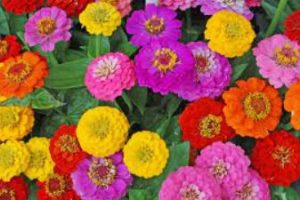
These plants like lots of summer heat and you’ll have tiny seedlings in days, with flowers powering up in just a few weeks. No other perennial can claim that speed! Due to their multicolor blossoms, Zinnias work wherever you need color. Simply sprinkle seeds, water for a couple of days and let nature take its course. Zinnias can grow one to three feet tall and may grow fuller if the stems are pinched at about six inches tall.
So get out there and enjoy the sun, dig some holes and plant some flowers. In a few weeks you’ll see the fruits of your labor and will be able to lounge in your beautiful garden, drink in hand, surrounded by color and nature’s own fragrances.
Krisha Chachra is a travel columnist and native to Blacksburg, Virginia. She currently writes and explores the world from her home-base in Charlotte, NC.



